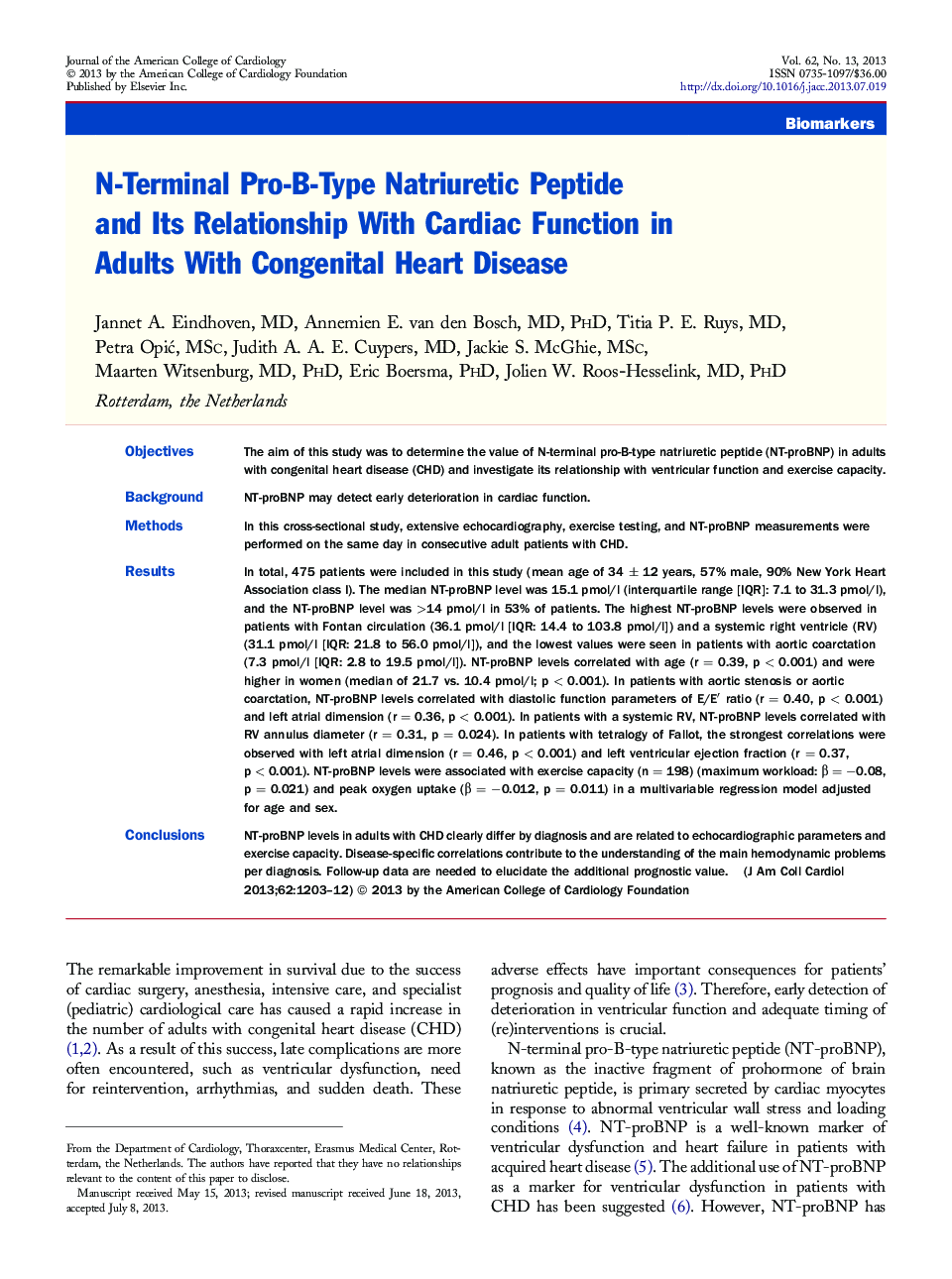| Article ID | Journal | Published Year | Pages | File Type |
|---|---|---|---|---|
| 2945493 | Journal of the American College of Cardiology | 2013 | 10 Pages |
ObjectivesThe aim of this study was to determine the value of N-terminal pro-B-type natriuretic peptide (NT-proBNP) in adults with congenital heart disease (CHD) and investigate its relationship with ventricular function and exercise capacity.BackgroundNT-proBNP may detect early deterioration in cardiac function.MethodsIn this cross-sectional study, extensive echocardiography, exercise testing, and NT-proBNP measurements were performed on the same day in consecutive adult patients with CHD.ResultsIn total, 475 patients were included in this study (mean age of 34 ± 12 years, 57% male, 90% New York Heart Association class I). The median NT-proBNP level was 15.1 pmol/l (interquartile range [IQR]: 7.1 to 31.3 pmol/l), and the NT-proBNP level was >14 pmol/l in 53% of patients. The highest NT-proBNP levels were observed in patients with Fontan circulation (36.1 pmol/l [IQR: 14.4 to 103.8 pmol/l]) and a systemic right ventricle (RV) (31.1 pmol/l [IQR: 21.8 to 56.0 pmol/l]), and the lowest values were seen in patients with aortic coarctation (7.3 pmol/l [IQR: 2.8 to 19.5 pmol/l]). NT-proBNP levels correlated with age (r = 0.39, p < 0.001) and were higher in women (median of 21.7 vs. 10.4 pmol/l; p < 0.001). In patients with aortic stenosis or aortic coarctation, NT-proBNP levels correlated with diastolic function parameters of E/E′ ratio (r = 0.40, p < 0.001) and left atrial dimension (r = 0.36, p < 0.001). In patients with a systemic RV, NT-proBNP levels correlated with RV annulus diameter (r = 0.31, p = 0.024). In patients with tetralogy of Fallot, the strongest correlations were observed with left atrial dimension (r = 0.46, p < 0.001) and left ventricular ejection fraction (r = 0.37, p < 0.001). NT-proBNP levels were associated with exercise capacity (n = 198) (maximum workload: β = −0.08, p = 0.021) and peak oxygen uptake (β = −0.012, p = 0.011) in a multivariable regression model adjusted for age and sex.ConclusionsNT-proBNP levels in adults with CHD clearly differ by diagnosis and are related to echocardiographic parameters and exercise capacity. Disease-specific correlations contribute to the understanding of the main hemodynamic problems per diagnosis. Follow-up data are needed to elucidate the additional prognostic value.
